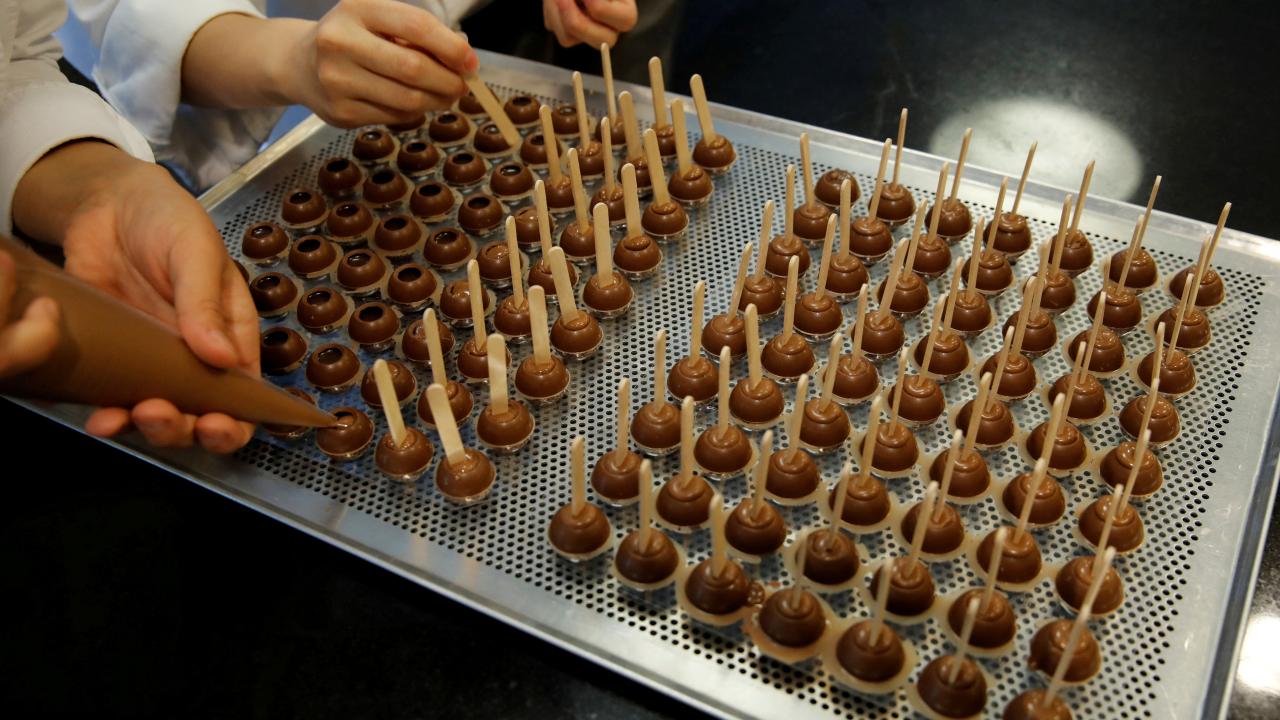
Macambo and copoazú, Amazonian fruits genetically related to cocoa, are seen as alternatives to produce new products. While in Europe, chocolatiers rely on oats and sunflower seeds.
Chocolate companies in Europe - faced with the volatility of the price of cocoa - have begun the search for new ingredients that are grown on that continent to replace or minimize the use of cocoa in chocolate. Meanwhile, in Ecuador some alternatives are also beginning to emerge.
And due to the production problems of Ghana and Ivory Coast, the main world producers, the world chocolate industry must pay up to more than 300% for its raw material, which usually did not exceed US$ 4,000 per ton and is now considering the challenge of lowering their production costs.
The price of cocoa for delivery next September closed on the New York Stock Exchange at US$ 7,740 per ton on Friday, July 5, is the latest updated data. Before, on June 2, it closed at US$10,294 and on April 11 at US$11,461, according to the specialized portal Investing.com .
In the Old Continent, one is the British company Nukoko, which this year managed to raise US$1.5 million in initial financing to expand its cocoa-free chocolate platform made with beans.
Ross Newton, its founder and co-CEO, explained to the swissinfo portal that investment is being made in this area because there is a critical need for substitutes now and for the future due to current increases in cocoa prices, caused by a supply deficit generated due to climate change.
“The market needs alternatives derived from different areas that are not harmed by climate change, thus offering a more affordable and sustainable option in the long term.”
Nukoko acquires the beans in the United Kingdom, which harvests 740,000 tons annually. Like cocoa beans, beans contain a protein called vicilin that gives a chocolate-like flavor when broken down through fermentation and roasting.
In Germany, the company ChoViva does not use broad beans, but oats and sunflower seeds.
“We have studied the history and production of chocolate in depth and discovered that the typical flavor does not come only from the cocoa bean. Rather, up to 80% of the flavors are formed during production processes such as fermentation and roasting,” the publication explains, citing the firm's website.
Another raw material with the potential to replace cocoa is carob, a legume grown in southern Europe, with which the Italian firm Foreverland has created its Freecao chocolate brand that uses 90% less water and produces 80% less. of CO2 emissions than conventional chocolate.
What is happening in Ecuador, are they also looking for new ingredients? Merlyn Casanova, executive director of the National Association of Cocoa Exporters of Ecuador (Anecacao), affirms that it is something that has not been considered at the moment.
More than 138 companies are dedicated to the preparation of chocolate and chocolate products in Ecuador, according to figures from Anecacao, based on data from the Superintendence of Companies.
61 of these companies exported chocolates and chocolate products to different parts of the world in 2023, which according to figures from the Central Bank reached 1,760 tons - which represents 16% less compared to the previous year -, thus generating around US $21 million.
However, Casanova explains that currently there are many substitutes for different products, but clarifies that by replacing the main raw material, cocoa, the final result could not be called chocolate, but rather any other sweet.
"It will never be the same. In the case of snacks, they are substitutes. That's why they say cocoa flavor,” he explains.
"IF COCOA HAS TO BE REPLACED, NOT WITH BEANS, BUT WITH FRUITS FROM THE SAME GENETIC FAMILY"
For her part, Susana Cárdenas, founder of Cárdenas Chocolate, an Ecuadorian brand that is exported to several European markets such as France, Spain, Switzerland, the United Kingdom and recently on the east coast of the United States, highlights the efforts of the European chocolate industry. for staying afloat looking for alternatives to replace cocoa, but assures that “creating chocolate without cocoa is impossible.”
He considers, like Casanova, that the final product “would never be called chocolate,” but rather is entering the nutritional segment with products similar to energy bars.
This is the complete opposite of the range that your company focuses on, which is the Bean to Bar concept, a movement created in the United States in 1996 that focuses on the natural characteristics of cocoa, highlighting its aromas and flavors in such a way that each bar reflects the terroir of the bean, as a response to all the massive chocolates from global companies that produce large volumes.
"If these large companies that exist here in Ecuador and in Europe are looking for alternatives to lower their costs and that can compete, that is fine, but they do not enter into a range of chocolates but rather sweets, but they would not enter the world of fine chocolate or of artisanal chocolate like Bean to Bar ,” warns the expert and states:
"The people who are in the world of chocolate, who believe in the nobility of cocoa, are going to remain firm in not changing the soul and the search for that noble cocoa that we have in Ecuador, which is the national cocoa."
In any case, Cárdenas analyzes that if we had to look for an alternative for cocoa that is from the same genetic family as macambo and copoazú, the latter is even known as white cocoa.
They are two fruits that grow in the Amazon and those that would be considered by some chocolate producers in Ecuador. "They are known as the cousins of cocoa, they have a rich flavor, in my opinion they sometimes become somewhat flat, they do not have the dimension that cocoa has, but they can be an alternative."
READ ALSO:
Ecuadorian cocoa in the face of global price rise: the historic opportunity of the “golden nugget”?









